SOCIALS
Income inequality in and around Contra Costa County
In: Politics
Tags: #contra-costa-county #policy #economics #inequality
Here's a look at income inequality in our area. I'm using data and charts provided by this Federal Reserve Economic Data at the St. Louis Fed.
Let's start with two charts for Contra Costa County and then compare it to our neighboring counties to the east and west of us.
The first shows per capita personal income growth and the second compares that growth to income inequality (top 20% of earners divided by bottom 20% of earners). What we see is alarming. (Note: the gray vertical bars are recessions.)

At over $70K per person, income in our county is almost twice what it is in San Joaquin County and 20% higher than Alameda County.
With home prices being what they are, only people with the means to save $200-300K for a down payment are moving into Lafayette, Walnut Creek, and Danville. This migration of wealth into our county is driving up the mean and median income.
This wealth isn't shared, however. It's not putting more money into the pockets of the less wealthy among us. We see this in the income inequality graph, which shows a growing gap between the top and bottom earners. The higher the ratio (Y-axis), the greater the distance between the top and bottom income brackets.
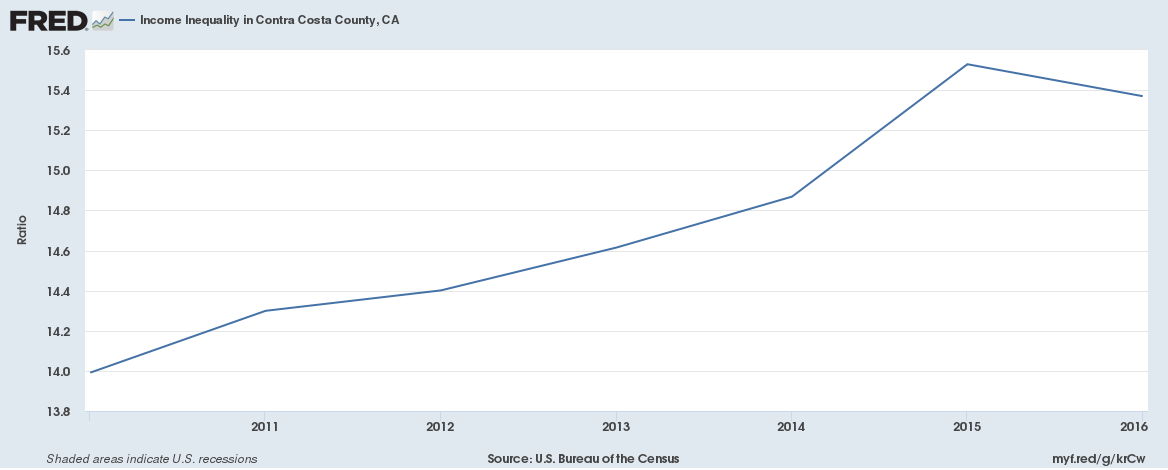
Income inequality is worst in Alameda County but all three counties have shown significant increases after the 2008-2011 recession ended. When you compare the movements in per capita personal income to the changes in income inequality, a picture comes pretty clear: the top earners have more than recovered from the recession while the bottom earners have not.
Here are the inequality charts for Alameda and San Joaquin:
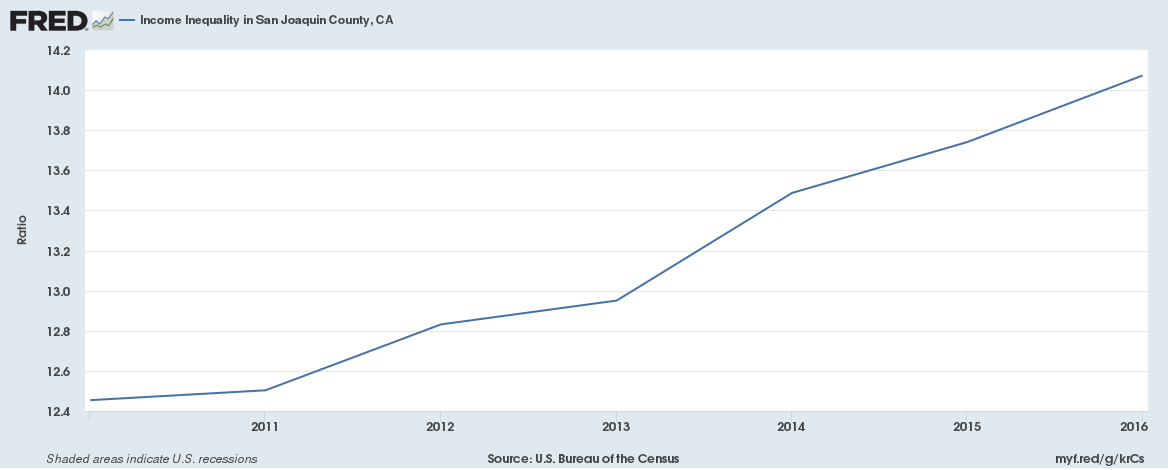
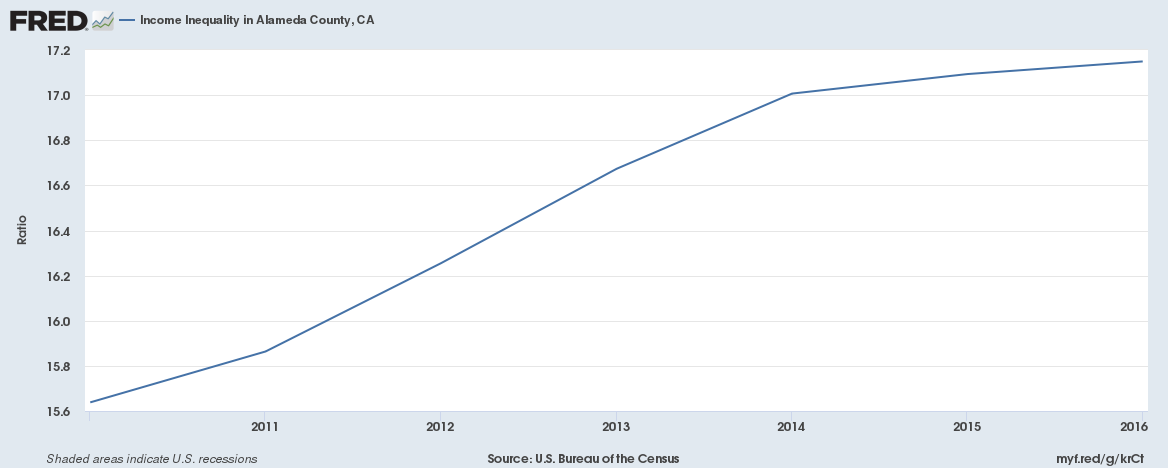
And here are the per capita personal income charts for Alameda and San Joaquin:
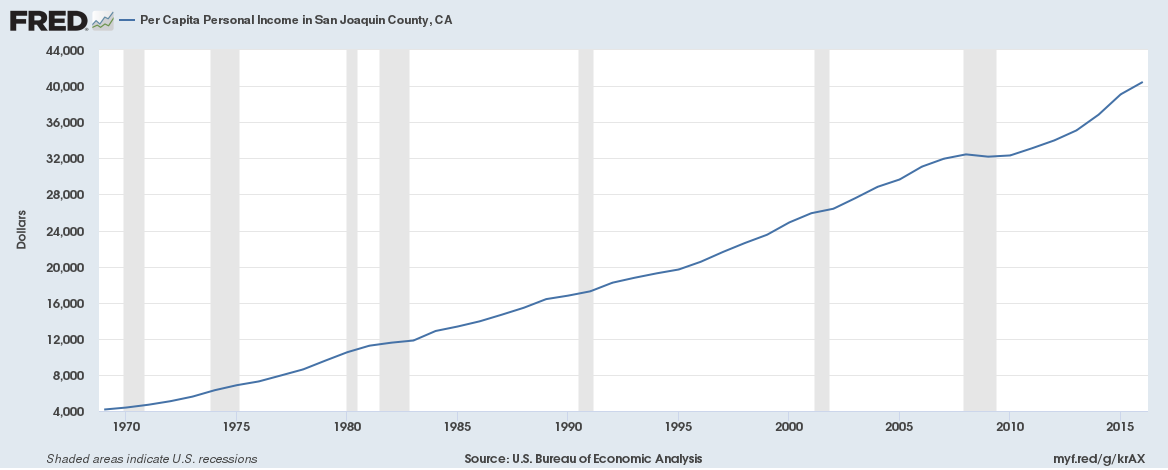
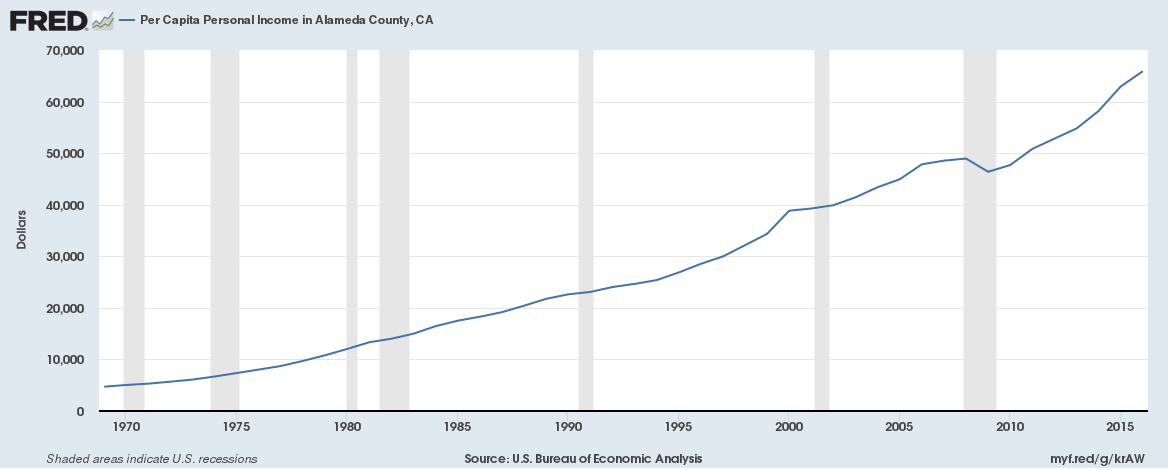
I look at these graphs and think, What's the upper limit? How high can it go? How high should it go? I'm not talking about income redistribution. I'm just concerned that if the gap gets too large it strikes at the heart of what this country is about. We're not the land of opportunity if all the opportunities go to the top wage earners.
I watched a video of Ben Shapiro arguing that income inequality is not a problem because most poor people eventually move out of the "poor" bracket and a lot of 1% earners drop out at some time or worked their way in over time. This is probably true, but it doesn't address the problem that gap is widening, so at some point being in the bottom 30 or even 40% will mean that you can't afford even the basic necessities.
Mobility likely depends on county services like public schools, public-private partnerships for affordable housing, and state programs that make food and health care available for the poorest among us. These are important programs to maintain. Ultimately we'll all benefit from them.
I don't care how much the wealthiest among us make. If you want to make a lot of money, by all means, go do that. The widening of the income gap is not sustainable and I'll be thinking more about where this leads.
More from Politics
- Why are some communities in Contra Costa County unincorporated? - Tue 20 June 2023
- Knocking your NOx off - Sat 18 March 2023
- Mobile homes are a piece of the housing puzzle - Mon 20 February 2023